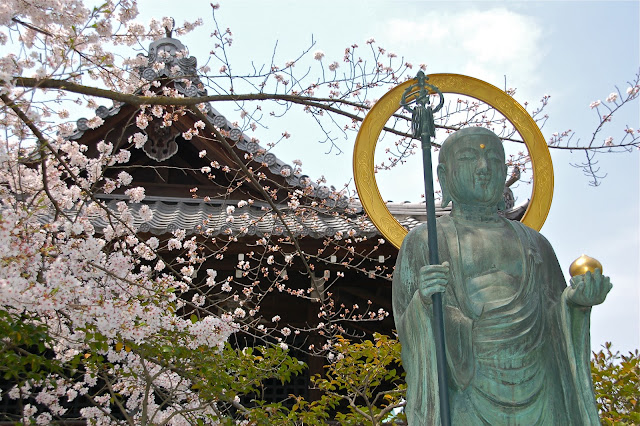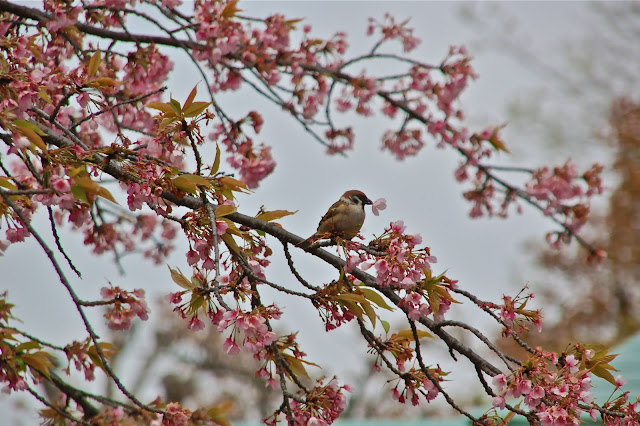 |
| Hanami 2011: Sakura in Kyoto, Japan less than a month after the triple disaster to the north |
In America when we think of cherry trees it might be in relation to George Washington, our first president, who according to legend said, "I cannot tell a lie, Father. I cut down your cherry tree."
His namesake Washington, DC is famous for the cherry trees that line its Tidal Basin. My 92-year-old mother recalls my late father's long ago promise to take her there in the spring to see the cherry blossoms. He never kept that promise, which seemed odd to me.
Living in Virginia during the early years of my childhood, I imagined my father to be a Washington-like figure. Both were land surveyors. Both had an interest in farming. Both had integrity.
People continue to flock to our nation's capital to see the cherry trees in bloom. This year's Cherry Blossom Festival began last week and extends into April. A Wikipedia entry about West Potomac Park tells the interesting story of how Washington, DC got its cherry trees. The idea originated in the nineteenth century with writer and photographer Eliza Ruhamah Scidmore who had spent time in Japan.
 |
| A weeping cherry in Kyoto, Japan |
And when it comes to cherry blossom (sakura) viewing, I think of Japan where it is known as Hanami and is taken to the level of a national celebration. I've seen tarps spread out along riverbanks in Hiroshima and Ashiya and in a public park on Kobe's Rokko Island, where families picnic and take in the beauty of the delicate blossoms.
 |
| A tree sparrow plucks a cherry blossom in Kyoto |
Courtesy of Kyoto Journal here's a link to Japan International's 2013 cherry blossom forecast map: http://www.jnto.go.jp/sakura/eng/index.php
 |
| The cherry tree I planted in my front yard last year sports its first blossoms in February of this year. (Live oak in the background.) |









